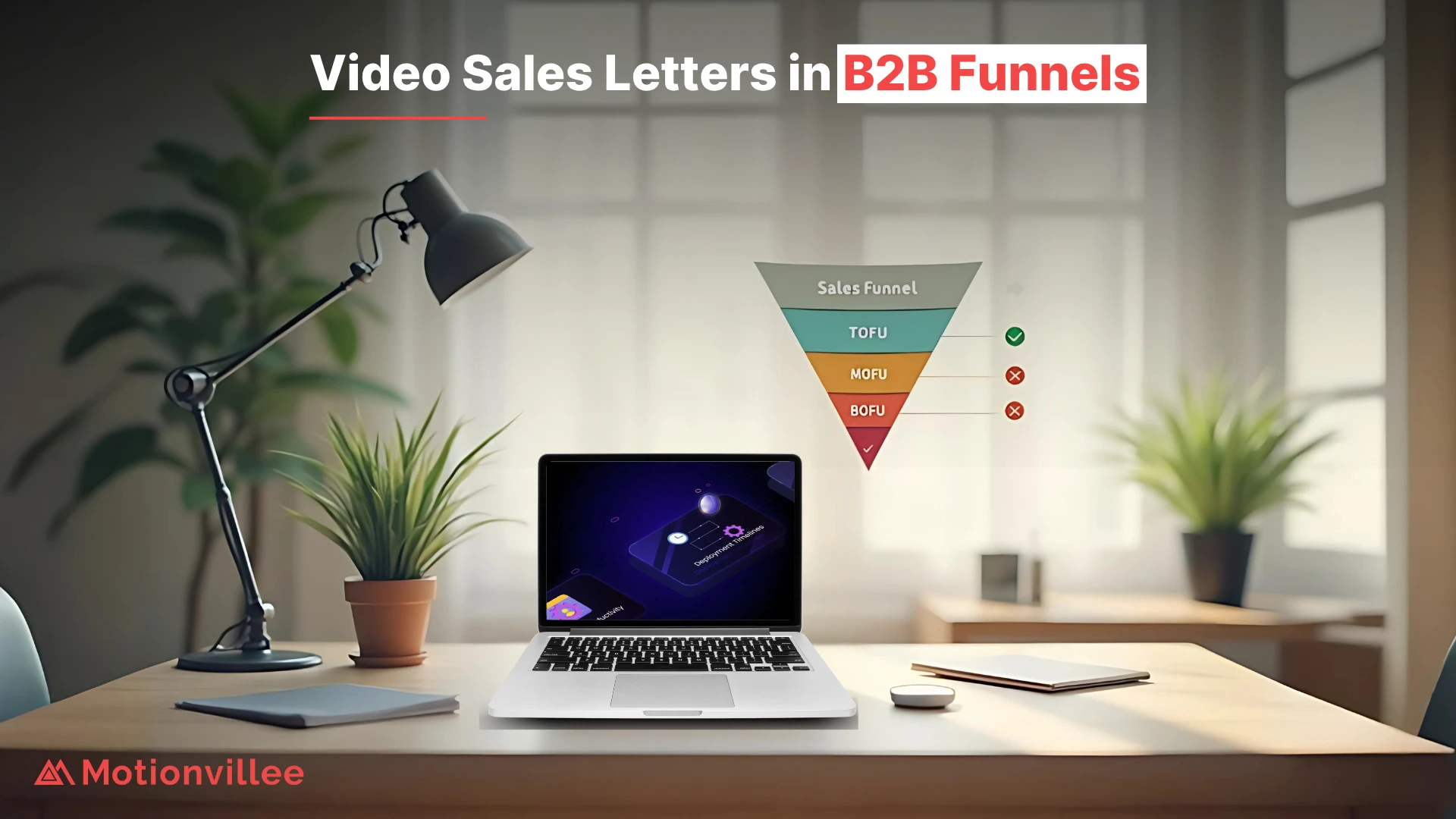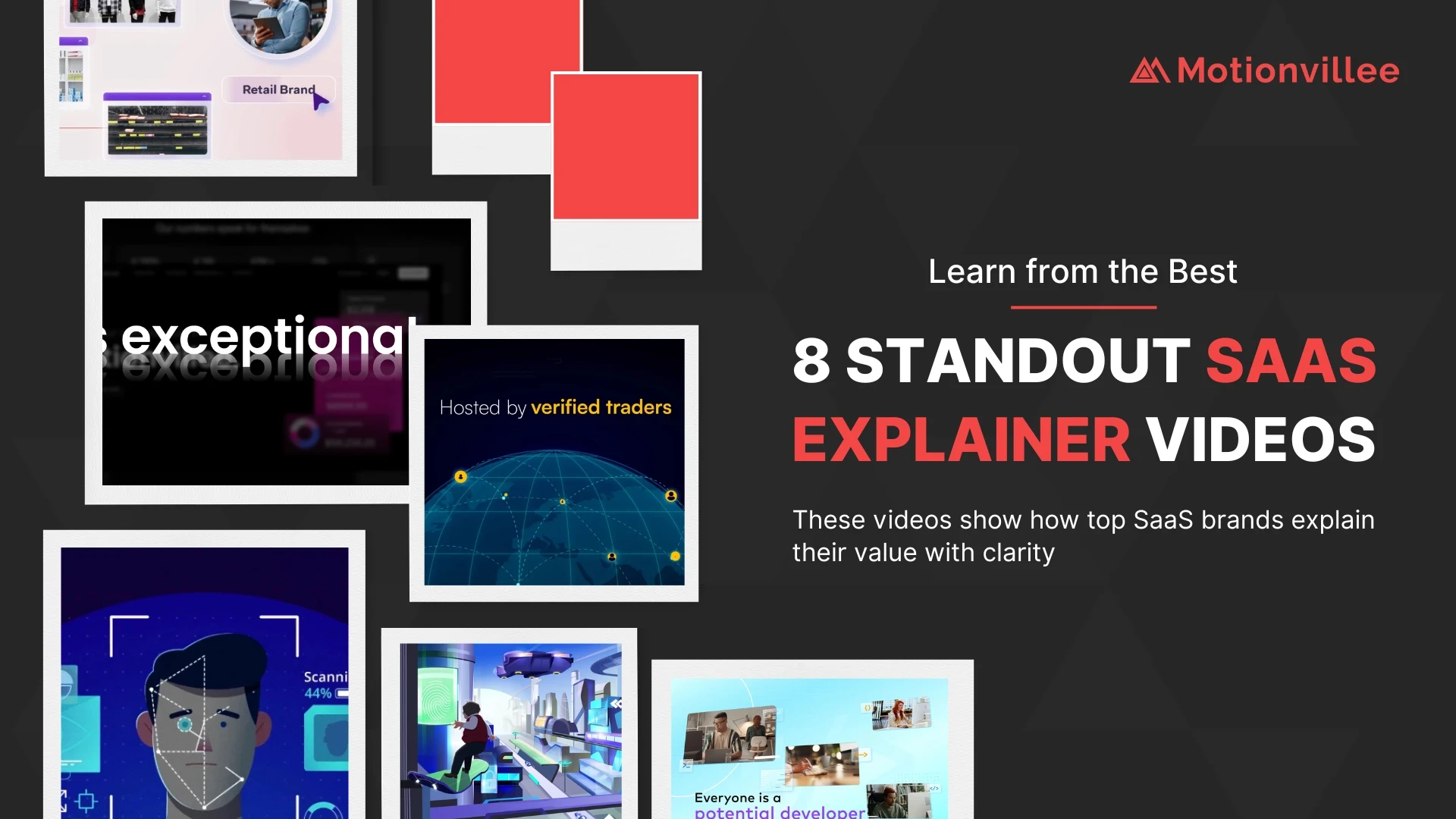Video marketing brings your startup into the spotlight, ensuring that it’s seen and heard loud and clear.
As with high competition, limited budgets, and low brand awareness, startups face many challenges in building their presence and attracting customers. That’s why, in this era of information overload, video marketing emerges as a powerful solution to these challenges.
It offers an impactful way for startups to reach their target audience and create a memorable impression. Through video, startups can tell their stories, build trust, and establish authority in their industry. Video ads have a 7.5 times higher click-through rate than display ads, making them more attention-grabbing and effective in engaging potential customers.
Below are the detailed video marketing tips for startups along with the tips you should not avoid to create successful content.
Reach the Target Audience by creating compelling brand story videos
Startups often struggle to gain attention in a crowded market due to limited resources and a lack of brand recognition. As the attention spans are short and competition is fierce, you need effective communication methods to break through the noise and connect with your audience.
You can start by creating compelling brand story videos that deepen the connection with your audience and showcase your startup’s values and mission. Below is the step-by-step procedure to do that-
- Find Your Story: Clarify your startup’s mission, vision, and values. Dig into why you started your startup and what makes it special.
- Know Your Audience: Understand who your customers are and what they care about—their pain points and desires.
- Craft a Script: Develop a concise, engaging story that resonates with your audience and reflects your startup’s unique journey.
- Visualize Your Story: Create a storyboard to plan visuals that enhance your narrative and effectively communicate your brand’s message.
- Choose Format: Decide between live-action, animation, or a mix based on what best suits your startup’s tone and audience preferences.
- Use Quality Equipment: Invest in good yet cost-effective video creation tools, including script writing and voice-over artists.
- Edit and Enhance: Use editing software to improve the quality of your video content, ensuring it aligns with your startup’s brand and messaging.
- Optimize for Platforms: Tailor your videos for each sales and marketing platform to maximize engagement and reach. Consider factors like aspect ratio, video length, and content format for different platforms.
- Measure and Iterate: Track the performance of your videos using analytics tools and adjust your content strategy accordingly. Experiment with different approaches and refine them based on audience feedback.
What Not to Avoid:
- Stay Authentic: Be true to your brand’s voice and values. Remember, you can’t be the best, but you can be different!
- Evoke Emotion: Connect with your audience through feelings, as emotional resonance can foster deeper connections.
- Show, Don’t Tell: Demonstrate your brand’s story visually to make a lasting impression on your audience.
- Include a Clear CTA: Encourage action after viewing by providing a clear call to action that guides your audience toward the next steps.
- Test and Improve: Experiment with different storytelling techniques and refine your approach based on feedback to make your cont more effective.
- Show the Real You: Give a behind-the-scenes look at your startup to showcase the human side and build authenticity.
- Focus on Impact: Highlight how your startup makes a difference to resonate with your audience’s values and aspirations.
- Define Target Audience by Developing Buyer Personas: Create detailed buyer personas to better understand your target audience’s needs, preferences, and behavior.
- Be Creative: Use your startup’s agility to explore new and unique storytelling methods that capture attention and leave a lasting impression.
- Let Everyone Pitch In: Encourage collaboration within your team to leverage diverse perspectives and experiences in shaping your startup’s story.
Define Your Target Audience Properly
It’s always challenging for startups to define their target audience and tailor their messaging accordingly. Without a clear understanding of their audience’s preferences and demographics, startups risk creating content that fails to resonate with their target market.
Conducting thorough research to identify your target audience’s needs, desires, pain points, and content consumption habits can help startups. This data-driven approach ensures that your video content is relevant and impactful.
Understanding your audience allows you to create content that speaks directly to their interests and addresses their specific challenges, increasing the likelihood of engagement and conversion.
Read the points below to understand your audience
- Define Your Target Audience: Start by clearly defining who your target audience is. Consider factors such as demographics (age, gender, location), psychographics (interests, values, lifestyle), and behavior (online habits, purchasing patterns).
- Conduct Surveys and Interviews: Create surveys or conduct interviews with existing customers or potential leads to gather insights into their needs, desires, and pain points. Ask open-ended questions to encourage detailed responses.
- Analyze Existing Data: Utilize any existing data you have, such as website analytics, social media insights, or sales data, to understand your audience’s behavior and preferences. Look for patterns and trends that can inform your content strategy.
- Explore Social Media and Online Communities: Engage with your target audience on social media platforms and online communities relevant to your industry. Observe discussions, comments, and questions to gain insights into their interests and challenges.
- Monitor Competitors: Research your competitors to understand their target audience and the type of content they produce. Identify gaps or areas where you can differentiate your startup’s content to better meet the needs of your audience.
- Use Keyword Research Tools: Conduct keyword research using tools like Google Keyword Planner or SEMrush to identify popular search terms related to your industry or niche. This can help you understand what topics your audience is interested in and searching for online.
- Create Buyer Personas: Develop detailed buyer personas based on the insights gathered from your research. These personas should represent different segments of your target audience and include information about their demographics, preferences, challenges, and content consumption habits.
- Track Engagement Metrics: Once you start producing video content, track engagement metrics such as views, likes, comments, and shares to gauge how well your content resonates with your target audience. Use this data to refine your content strategy over time.
- Stay Agile and Iterative: Keep your research and content strategy agile and iterative. As your startup grows and evolves, continue to gather feedback from your audience and adapt your content strategy accordingly to ensure relevance and impact.
Useful Tips-
Start Small: Don’t try to target everyone at once. Focus on a specific niche audience to better understand their needs and preferences.
- Listen Carefully: Pay attention to what your audience is saying on social media, forums, and review sites. Their feedback can provide valuable insights into their pain points and preferences.
- Be Data-Driven: Base your content decisions on data and insights rather than assumptions or guesswork. Use tools and analytics to track the performance of your content and adjust your strategy accordingly.
- Stay Curious: Keep exploring and learning about your target audience to stay ahead of their changing needs and preferences. Attend industry events, participate in online discussions, and keep an eye on emerging trends.
Experiment and Produce Quality Content that Stands Out
In their video marketing journey, startups often struggle to create video content that effectively communicates their message and stands out from the competition. With limited resources and expertise, startups may find it challenging to produce high-quality video content that captures the attention of their audience.
Investing in quality video content allows startups to showcase their USP memorably and engagingly, driving brand awareness and customer engagement.
Actionable Tips:
- Research Video Creation Options: Explore outsourcing to professional agencies like Motionvillee or using DIY tools like Canva, considering your startup’s needs and budget
- Promote Your Videos: Share across multiple channels—website, social media, newsletters—to maximize reach and impact.
- Continuously Improve: Stay updated with video marketing trends, experiment with new ideas, and optimize based on performance data.
- Stay Authentic: Maintain authenticity in your storytelling to build trust and connect with your audience on a personal level.
- Engage with Your Audience: Encourage feedback and interaction, responding to comments and seeking input for future content.
Utilize SEO techniques to optimize your video content
Even with great video content, startups may struggle to gain visibility and attract viewers without effective promotion strategies. So, utilizing SEO techniques to optimize your video content for search engines can increase its discoverability. Additionally, using social media and paid advertising to promote your videos can help you reach a wider audience.
Promoting your video content across multiple channels allows you to amplify its reach and engage with potential customers at different touchpoints in their customer journey.
You can develop a comprehensive promotion plan that includes strategies for SEO, social media, and paid advertising to ensure maximum visibility and engagement for your video content. You can refer to the actionable list down below for the same-
1. SEO Strategy:
- Conduct keyword research to identify relevant keywords related to your video content.
- Optimize video titles, descriptions, and tags with target keywords to improve search visibility.
- Create a dedicated landing page on your website for each video to enhance SEO and drive traffic.
- You can Utilize tools like Google Keyword Planner, SEMrush, or Moz Keyword Explorer for your Keyword research.
2. Social Media Strategy:
- Share your video across multiple social media platforms, including Facebook, Twitter, LinkedIn, Instagram, and TikTok.
- Customize your messaging and content format for each platform to maximize engagement.
- Encourage social sharing and engagement by asking questions, running polls, and incentivizing user-generated content.
3. Paid Advertising Strategy:
- Consider running targeted advertising campaigns on social media platforms like Facebook Ads, Instagram Ads, and LinkedIn Ads to reach your target audience.
- Use Google Ads to promote your video content through search and display advertising.
- Experiment with different ad formats, targeting options, and bidding strategies to optimize campaign performance and maximize ROI.
4. Cross-Promotion Strategy:
- Partner with influencers, industry experts, or complementary brands to cross-promote your video content to their audiences.
- Collaborate with other content creators or channels within your niche to expand your reach and increase visibility.
5. Email Marketing Strategy:
- Incorporate video content into your email marketing campaigns to drive engagement and conversions.
- Create teaser videos or video snippets to include in email newsletters, promotional emails, and drip campaigns.
- Use email segmentation to deliver targeted video content to specific segments of your audience based on their interests and behaviors.
6. Community Engagement Strategy:
- Engage with online communities, forums, and groups relevant to your industry or niche to promote your video content organically.
- Participate in discussions, answer questions, and share valuable insights to establish credibility and build relationships with community members.
- Incorporate video content into your community engagement efforts to provide valuable resources and foster meaningful connections.
7. Analytics and Optimization:
- Track the performance of your video content across all promotion channels using analytics tools and metrics such as views, engagement, click-through rates, and conversions.
- Use data insights to optimize your promotion strategies, refine targeting options, and allocate budget effectively to channels that drive the highest ROI.
- Continuously test and iterate on your promotion plan to identify what works best for your audience and objectives, and adjust accordingly to achieve maximum visibility and engagement for your video content.
8. We have combined a list of SEO tools that will help you in your startup’s video marketing strategy –
- Google Keyword Planner: Helps identify relevant keywords for SEO strategy.
- Yoast SEO: WordPress plugin for optimizing video titles, descriptions, and tags.
- Hootsuite/Buffer/Sprout Social: Social media management tools for scheduling and managing posts.
- Sprout Social/Socialbakers: Social media analytics platforms to track engagement metrics.
- Adobe Premiere Pro/Final Cut Pro/Canva: Video editing tools for creating and editing video content.
- Facebook Ads Manager: Platform for creating and managing Facebook and Instagram ad campaigns.
- Google Ads: Run search, display, and video ads across Google’s network.
- LinkedIn Ads: Target professionals and businesses with sponsored content, text ads, or sponsored InMail.
- Collabor8/GrapeVine Logic/AspireIQ: Platforms for finding influencers and managing collaborations.
- Mailchimp/Constant Contact/ConvertKit: Email marketing platforms for incorporating video content into email campaigns.
- Reddit Enhancement Suite/Buffer Reply: Tools for managing interactions and conversations within online communities.
- Google Analytics: Tracks website traffic, user behavior, and conversion metrics.
- Google Optimize/Optimizely: A/B testing tools for optimizing landing pages or ad creatives.
Final Thoughts
Video marketing offers startup businesses a powerful tool for overcoming common challenges and achieving success in today’s competitive landscape. By leveraging the power of video, startups can effectively communicate their message, engage their audience, and drive brand awareness and customer engagement. By following these tips and strategies, startups can unlock the full potential of video marketing and position themselves for long-term success.








